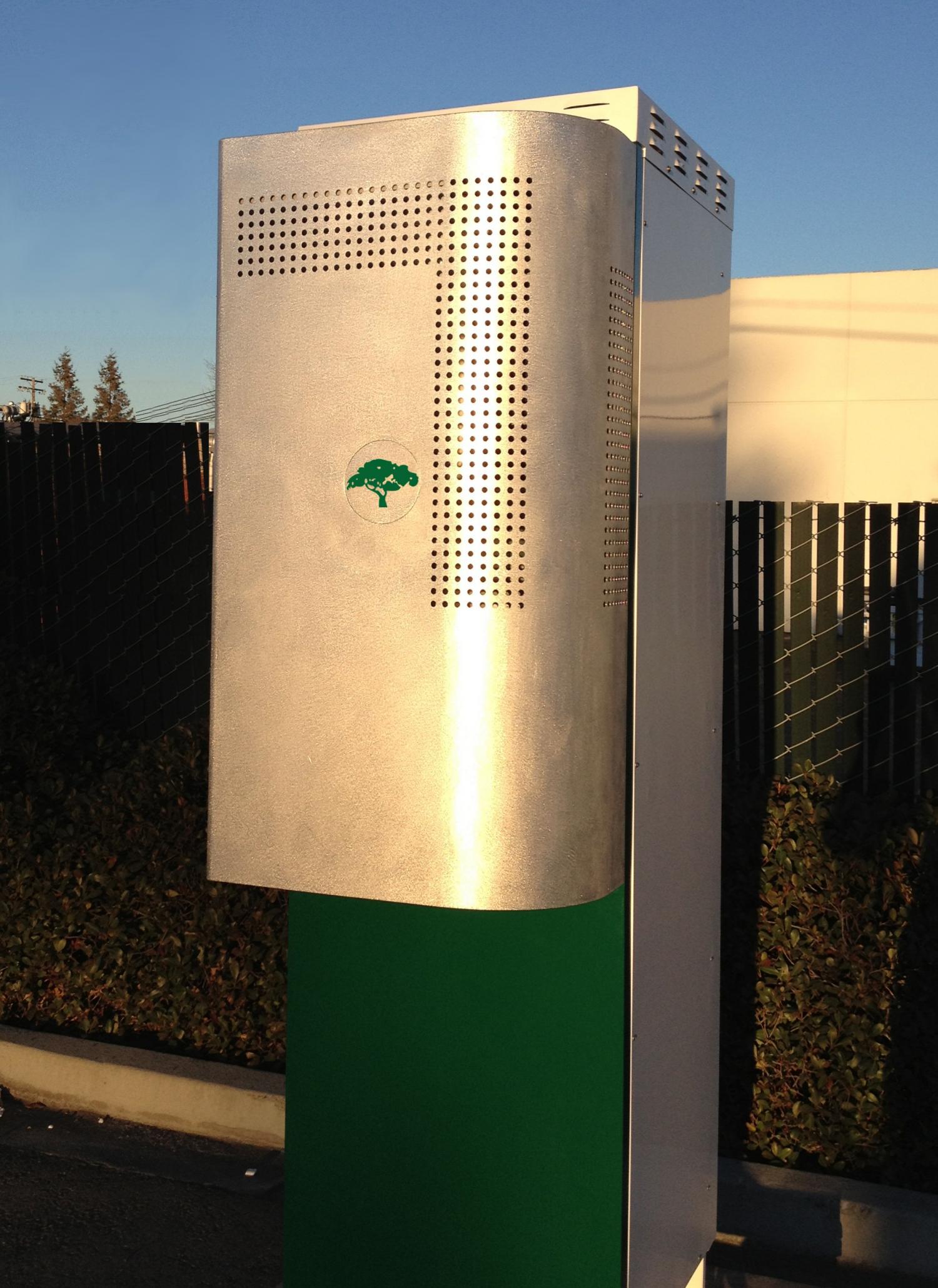
Fossil fuels have long held an advantage over renewables in that they provide a combined energy source and storage medium in one substance, be it gasoline, coal, oil or natural gas. The fact that you can save it, store it, then use it continuously whenever you need it is a tremendous convenience.
That gap is now being closed with the advent of combined solar-storage systems. These new systems not only match the capability of fossil fuels, but can actually go them one better. How? By taking advantage of the separation between energy source and storage medium, a number of new suppliers are now inserting intelligence between the two, allowing users to effectively blend their renewable resources with conventional ones in ways that are most advantageous.
Take, for example, Green Charge Networks (GCN), who provides battery storage combined with solar panels in a system that employs predictive algorithms to anticipate a building's demand for electricity on a moment-by-moment basis. This information is then used to smooth out demand, resulting in significant savings in demand charges. The company just reached a milestone this week of 1 MW of installed capacity.
So what are demand charges and what are they for?
The utilities explain it with a single word: capacity. They need to be able to deliver every single watt of power to every single customer at any given moment of the day. If they fall short, the whole system could crash. When you turn on a light or start your dishwasher, you're probably not thinking about how many other people are making demands on the system at the same moment. But your electric utility would like you to. Because if you don't that could mean they need to build another power plant to increase their capacity. And power plants are very expensive. So they charge a fee for demand, which in states like New York and California, can amount to as much as 40 percent of the entire electric bill or more. This is done both to incentivize limit-setting (they sometimes even pay customers for demand reduction) and to help pay for new capacity, should it be needed.
Then there is also the question of so-called peaker plants that can be brought online quickly to respond to surging demand. They tend to be less efficient and more polluting than plants that run continuously.
So, reducing peak demand can not only save customers money, it can also help reduce pollution, including carbon emissions. Furthermore it can also help stabilize the grid. These reasons were all cited by the state of California's Public Utilities Commission, who acted late last year to encourage energy storage investment, going so far as to set a target for 1.325 GW of capacity to be online by 2020.
Industry has responded. A few weeks back we wrote about a solar storage partnership between Tesla and Solar City. Tesla will provide battery technology developed for its electric vehicles to Solar City, in order to allow their customers to store power to maintain operation at night and during cloudy spells. As an added benefit, it provides backup during grid outages, and like GCN's system, their DemandLogic software also helps reduce peak demand charges. While GCN has primarily been placing their systems in retail stores along the East Coast, Tesla and Solar City are targeting both residential and commercial customers with installations in California, Connecticut and Massachusetts.
Solar Grid Storage is another player in this space - offering an integrated system. In their business model, they retain ownership of their storage systems, providing storage as a service to their customers. By maintaining the storage asset and dispatching power to the grid as needed, they can derive revenue from the grid support market, to help finance the storage assets. At the same time, their systems include the power inverter needed to convert the DC power coming off the PV arrays into grid synchronized AC power. This saves their customers the expense of installing the inverters, which all other grid-supported solar PV systems require.
Don't be surprised to see the sector grow and become increasingly competitive. Most of us will be the better for it, enjoying reduced pollution, lower electric bills, reduced climate impact and a more stable grid. As for the utilities, they are worried, as they should be, though we need to ensure that they remain viable, too, in the midst of momentous changes. We will continue to need them and the grids they maintain, for years to come.
Image courtesy of Green Charge Networks
RP Siegel, PE, is an inventor, consultant and author. He writes for a number of sustainability sites including Triple Pundit and Justmeans. He co-wrote the eco-thriller Vapor Trails, the first in a series covering the human side of various sustainability issues including energy, food, and water in an exciting and entertaining format. Now available on Kindle.
Follow RP Siegel on Twitter.

RP Siegel (1952-2021), was an author and inventor who shined a powerful light on numerous environmental and technological topics. His work appeared in TriplePundit, GreenBiz, Justmeans, CSRWire, Sustainable Brands, Grist, Strategy+Business, Mechanical Engineering, Design News, PolicyInnovations, Social Earth, Environmental Science, 3BL Media, ThomasNet, Huffington Post, Eniday, and engineering.com among others . He was the co-author, with Roger Saillant, of Vapor Trails, an adventure novel that shows climate change from a human perspective. RP was a professional engineer - a prolific inventor with 53 patents and President of Rain Mountain LLC a an independent product development group. RP was the winner of the 2015 Abu Dhabi Sustainability Week blogging competition. RP passed away on September 30, 2021. We here at TriplePundit will always be grateful for his insight, wit and hard work.














